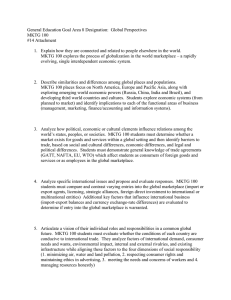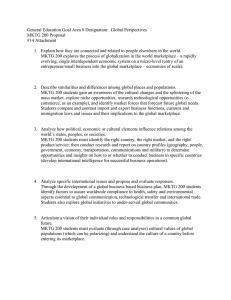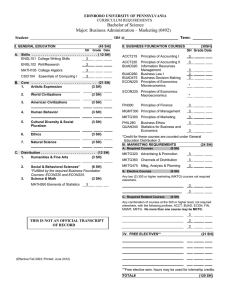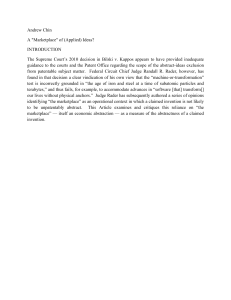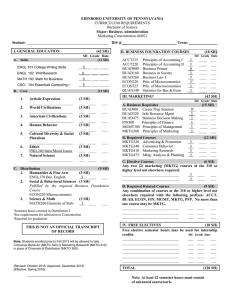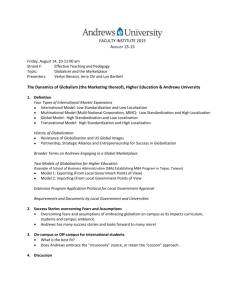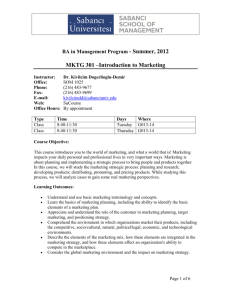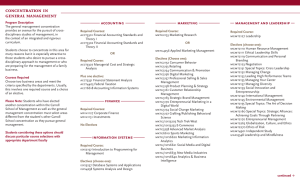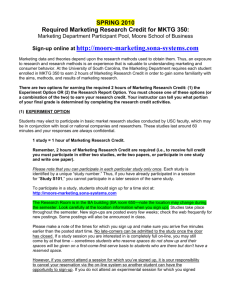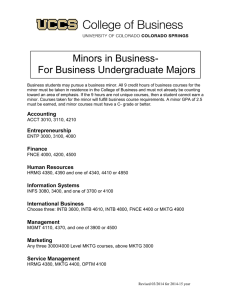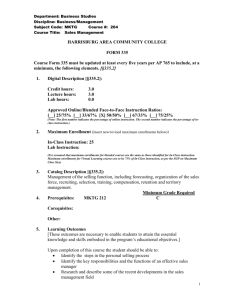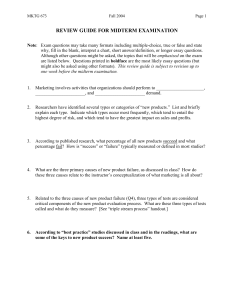Ch 03 Media global - solomon - The Global Market
advertisement
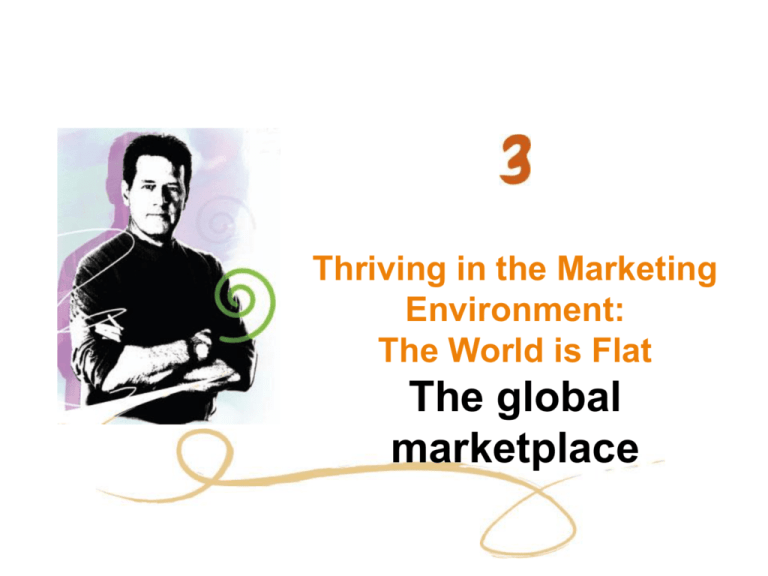
Thriving in the Marketing Environment: The World is Flat The global marketplace Adopting a Global Focus: Consider • • • • • business ethics various environments level of economic development Unique variables & characteristics Similar variables & characteristics 2 Figure 3.1: Linking Ethics to Profits 3 Figure 3.4: Decision Model for Entering Foreign Markets 4 Global Marketing • World Trade: • the flow of goods/services • among different countries – • the value of all exports/imports of the world’s nations 5 Figure 3.3: North America Trade Flows (in $billions) 6 Global Marketing • Countertrade: • trading products between countries Goods are paid for with other goods • or • supplying goods in return for tax breaks from local government (accounts for 25% of all world trade) 7 Making the Decision to Go Global • “Go” or “no go”: • is it in the best interest of the firm to remain in home market to go where opportunities exist Which global markets are most attractive? 8 Making the Decision to Go Global • Key to the decisions: market conditions creating a competitive advantage 9 The Global Marketing Environment • Understanding the external environment affecting marketers’ global strategies: • economic, • competitive, • technological, • Political / legal • cultural factors 10 How “Global” Should a Global Marketing Strategy Be? • Market-entry strategy: the level of commitment to operate in another country Figure 3.4 11 Levels of Entry strategies • Exporting Lowest level of commitment to foreign marketplace Selling products to other countries Sell own, or intermediaries, or export merchants • Contractual agreements 2nd level of commitment Licensing agreement (product) Franchising (whole business) 12 Levels of entry strategies • Strategic alliances 3rd level of commitment 1 or more domestic firms JOINT VENTURE • SA with 2+ firms to create new business • Direct investment 4th level of commitment Buying a firm in target company To expand businesses 13 Levels of entry strategies • Born Global companies sells products in multiple countries • from moment they are created Rather than traditional slow way Example: Logitech 14 Product level decisions: Marketing mix strategies • Standardization vs. localization Standardization: • offer the same products in all markets Localization: • offer a customized marketing mix for each country 15 Product level decisions: Mktg Mix • Product decisions Straight extension strategy • Sell same product in domestic & foreign markets Product adaptation strategy • Offers similar but modified products in foreign markets. 16 Global Marketing: Choosing a Marketing Mix Strategy (cont’d) • Product decisions Product invention strategy • Firm develops new product for foreign market Backward invention • Simplifies product for foreign market –Treadle sewing machines 17 Global Marketing: Choosing a Marketing Mix Strategy • Promotion decisions: whether or not to modify promotions How will message be perceived? • Similar or modified? 18 Product level decisions: Mktg Mix • Price decisions: consider: Transportation forms Currency exchange rates Tariffs & non tariff barriers Bribes 19 Product level decisions: Mktg Mix • Price decisions Free trade zones • Areas to warehouse goods without paying taxes/duties til goods are moved into marketplace Gray market goods • Mfg’d goods (outside country) • then imported without consent of trademark holder Dumping • Pricing exported products at lower level than products are priced at home 20 Global Marketing: Choosing a Marketing Mix Strategy (cont’d) • Distribution decisions Methods used re: infrastructure, etc Ways to package Ways to refrigerate Ways to store goods 21 The End • There are so many more variables to consider • More than this chapter offers. • Remember, we offer a whole semester of International marketing 22 At the Borders: issues • Protectionism: quotas, embargoes, tariffs 23 At the Borders • World Trade Organization (WTO): to “help trade flow smoothly, freely, fairly, and predictably” • Economic communities promoting trade 24 The Global Marketing Environment • A company going global • must understand • local conditions in the targeted country 25
